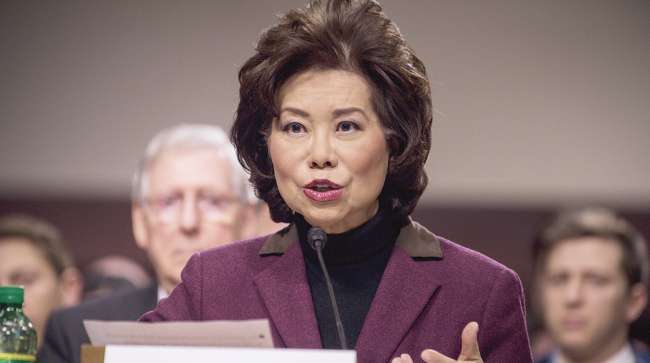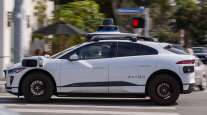Senior Reporter
Transportation Secretary Elaine Chao Announces Updated Guidance for Automated Vehicles

U.S. Transportation Secretary Elaine Chao on Sept. 12 unveiled updated voluntary automated commercial and passenger vehicle federal guidance for manufacturers and states that want to deploy self-driving vehicles.
“ ‘A Vision for Safety 2.0’ builds on the previous policy of the National Highway Traffic Safety Administration and incorporates feedback received through public comments and congressional hearings,” according to a Department of Transportation statement.
The agency said the guidance, which replaces the one issued in September 2016, paves the way for the safe deployment of advanced driver-assistance technologies by providing voluntary guidance that encourages best practices and prioritizes safety, as well as technical assistance to states and best practices for policymakers.
Chao said that the new guidance is an evolving document and that DOT is at work on version 3.0.
The guidance also is in alignment with legislation pending in Congress, Chao said.
.@USDOT releases latest Voluntary Guidance 2.0 for Automated Driving Systems: A Vision for Safety. https://t.co/FqJhXbAcR5 #VisionforSafety — TransportationGov (@USDOT) September 12, 2017
NHTSA said the guidance is primarily aimed at safety elements related to the making and deployment of trucks, buses and cars. The Federal Motor Carrier Safety Administration is working on specific requirements for the operational side of automated trucks and buses.
“As you know so well, our country is on the verge of one of the most exciting and important innovations in transportation history, the development of the automated driving systems — ADS — commonly referred to as automated or self-driving vehicles,” Chao said in a speech from an automated vehicle test site at the University of Michigan in Ann Arbor.
She said the new technologies not only will potentially reduce fatal and injury crashes, but also cut down on commuting times for drivers and offer a chance for the disabled and elderly to travel on the open road.
“NHTSA research shows that about 94% of serious crashes are caused, unfortunately, by human error,” Chao said. “Automated driving systems hold the promise of significantly reducing these errors and saving tens of thousands of lives in the process.”
Chao said the updated voluntary guidance encourages new entrants and ideas that deliver safer vehicles, makes DOT processes more nimble by creating a flexible framework to help match the pace of private sector innovation and supports industry innovation. It also encourages open communication with the public and stakeholders, and identifies best practices nationwide and technical assistance to state legislatures.
DOT said specifically, the new voluntary NHTSA guidance:
• Focuses on SAE International Levels of Automation 3-5 – Automated Driving Systems
• Clarifies the guidance process and that entities do not need to wait to test or deploy their ADS
• Revises unnecessary design elements from the safety self-assessment
• Aligns federal guidance with the latest developments and industry terminology
• Clarifies federal and state roles going forward
NHTSA said the voluntary guidance sends a “very clear signal” to industry and the states that DOT is prioritizing safety and discouraging a “messy patchwork” of state laws.
Some of the revised guidance was made in response to 160 unique comments on the 2016 version, known as the Federal Automated Vehicles Policy. The update represents an attempt to reduce ambiguity and streamline focus for states and manufacturers, allowing safety self-assessments without federal regulators putting the brakes on innovation and deployments, NHTSA said.
The guidance does not require entities to share data but does recommend development of a plan for sharing data for a broad knowledge base, DOT said.




